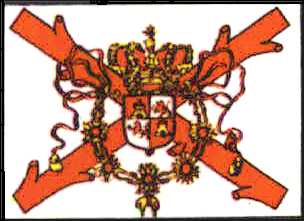Nelson said: "Success is enough to cover many faults; but how many beautiful actions remain forever forgotten in a defeat? Thus on October 12, 1742, the naval battle of the same name occurred in havana in which the Spanish and British weapons were defeated by the former, but as Nelson claims, this masked a series of beautiful actions carried out by the frigate Galga and its extremely competent captain, Pedro de Garaycoechea.
In 1748, the Spanish fleet in Cuba remained active, after ten years of war and blockade. Vernon and Knowles' fleets had been defeated but not defeated and were eager for revenge.
In October, it is known of the arrival of a convoy from England and it is decided to make an effort to capture it. The fleet, with many deficiencies, is tightened and leaves at the beginning of October. Among the fleet, and in exploration work, it is worth highlighting the ships of Velasco and Garaycoechea, two excellent commanders (the first will be the defender and hero of the fort of Morro) and with a long experience. Both are widely known in Havana for appearing, after their incursions, with two or three English ships tow and their returns were seen with anticipation and joy by the people of Havana. But since 1746 his activities have been limited, the number of English ships is increasing and as early as 1746, Garaycoechea suffered a scare when he was ambushed by six English units off Havana from which he went well for his extraordinary abilities.

On 6 October, the convoy that, aware of the proximity of the English fleet, turns and sets course for it, is sighted. Reggio's fleet finds himself unable to reach her and throws the Galga, Garay's frigate, on her hunt. It was this, like its captain, a special ship, a three-bridge frigate. Built like a cream frigate, it had undergone heavy remodeling. In 1744 I came to have 50 guns and more than half of them 12 pounds (ships of their category could give thanks if they had one of 6 pounds) and a couple of 18 pounds. At its best you could consider the ancestor of German pocket battleships … no English ship that could reach her could defeat her, and any ship that could defeat her could not reach her. In 1747 it was discovered that this has caused structural damage so that it is decided to reduce its number of guns to 30. We do not know its new configuration but it must be assumed that even in 1748 it would have a good capacity to stick far superior to its peers and with cannons capable of penetrating even a larger ship (which will be of great importance in subsequent events). In addition, the Galga was accompanied by a small schooner called Holy Trinity that until 1744 was directed by the father-in-law of Garaycoechea.
legend where it is said to be a 3-bridge frigate
On October 11, a couple of lagging boats were discovered and Velasco and Garaycoechea head towards them, separating. The Garaycoechea dam is a fragille, schooner or brig (depending on which author or source is consulted) but all agree that it was heavily armed for its size, with 22 guns (most low-value stoners except for boardings) and a shipment of sugar and rum.
Normally the fight would have been brief but this time, the Bahaser (some name) decides to lengthen the resistance; presumably encouraged by the proximity of the English fleet or its escort. So the two Spanish ships had to prove that they were capable and after two and a half hours of combat managed to surrender it. Little hard the Spanish joy because on the horizon appeared the sails of another English vessel, it was the Lenox, a 74-gun liner that accompanied the convoy. According to English historians he rode 56 cannons, perhaps some were dismantled to accommodate more merchandise and it is known that in his cellar he carried a million and a half pesos, whatever it was in this number dance, on the 12th he was already riding 70 cannons again. Regardless this vessel was of a higher category in both resistance and firepower.
The usual result would have been the abandonment of the dam and the escape of the privateers but the captain of the Lenox, Charles Holmes, did not know Garaycoechea.
The Bahaser and the Holy Trinity bowed to Havana as the Galga faced Lenox.
The fight was as it should be: brief but not with the usual result. The Lenox (or perhaps it was La Galga who sought him out) managed to shoot embroidered against La Galga but after that first walk the English animo failed. The English captain had to assess that it was loaded with a million and a half pesos, and the frigate seemed well able to have a lucky shot and leave its ship unwell, plus the Spanish fleet was hovering nearby and could quickly become a hunter-hunter.
Thus, the Lenox turned and headed abandoning the fight, towards the English fleet. With what added to history one of the very few, if not unique, at which point a frigate defeats a warship forcing him to flee.
The next day, the faces La Galga and Lenox were seen again, but Admiral Reggio with a very good head forbade Garaycoechea from joining the line for the serious damage suffered in his embroidery in the fight with the English. Still, La Galga showed off again in that match facing four English frigates but that ….
That's another story!
(excerpt from a new title in preparation for the frigate Galga in the Jenkins Ear War)